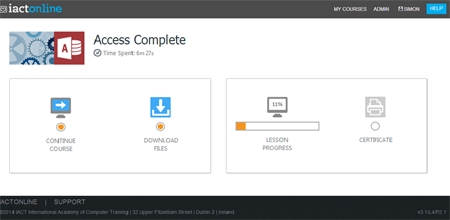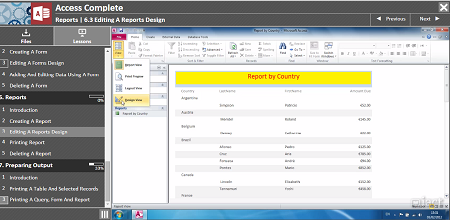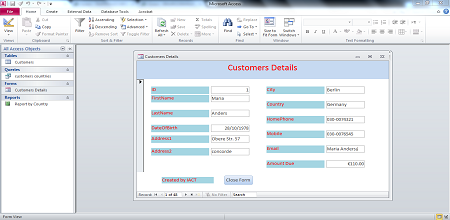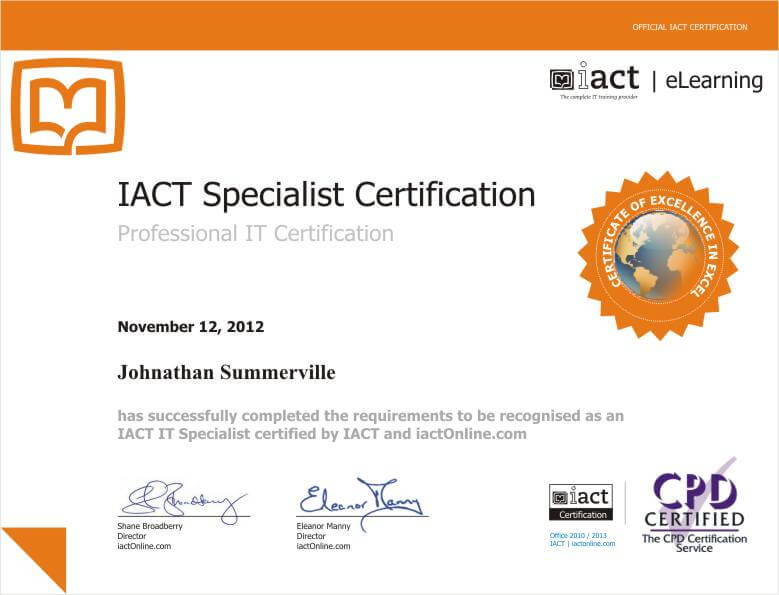Overview
What does the course cover?
This course guides new Access users through the powerful Microsoft Access program introducing them to the concepts and ideas behind relational databases. The course explains the structure, design and capabilities of databases and covers automation using the VBA programming language.
Course Preview
Each course contains high quality, professional video lessons, downloadable exercise files and real-world templates for you to use.



Course Details
Section 1: Introduction To Access
- Lesson 1: Introduction
- Lesson 2: Starting Access
- Lesson 3: Opening An Existing Database
- Lesson 4: Exploring Using The Navigation Pane
- Lesson 5: Closing A Database And Exiting Access
- Lesson 6: Creating A New Database
Section 2: Tables
- Lesson 1: Introduction
- Lesson 2: Opening Existing Tables
- Lesson 3: Editing, Adding And Deleting Records
- Lesson 4: Sorting And Filtering Records
- Lesson 5: Creating A New Table
- Lesson 6: Primary Keys
- Lesson 7: Data Types
- Lesson 8: Field Propeties
Section 3: Table Relationships
- Lesson 1: Introduction
- Lesson 2: Linking To Create A Relationship Between Tables
- Lesson 3: Editing A Link
- Lesson 4: Deleting A Link
Section 4: Queries
- Lesson 1: Introduction
- Lesson 1: Creating And Saving A Query
- Lesson 1: Sorting Records In A Query
- Lesson 1: Specifying Criteria
- Lesson 1: Finding Empty Cells
- Lesson 1: Criteria For Numbers
- Lesson 1: Entering Multiple Criteria
- Lesson 1: Using More Than One Table In A Query
- Lesson 1: Different Query Types
Section 5: Forms
- Lesson 1: Introduction
- Lesson 2: Creating A Form
- Lesson 3: Editing A Forms Design
- Lesson 4: Rename And Delete A Form
Section 6: Reports
- Lesson 1: Introduction
- Lesson 2: Creating A Report
- Lesson 3: Editing A Reports Design
- Lesson 4: Adding An Image And A Calculated Field
- Lesson 5: Deleting A Report
Section 7: Preparing Output
- Lesson 1: Introduction
- Lesson 2: Printing A Table And Selected Records
- Lesson 3: Printing A Query, Form Or Report
Skills You’ll Learn
What you’ll be able to do after the course
- Create and understand simple relational database models
- Query a database and create summary reports
- Create simple forms and reports for data entry
- Select cells, rows and columns
- Create macros to automate reports and forms
- Editing A Reports Design
How You Can Apply These Skills
What you’ll be able to use these skills for
- Design and build databases incorporating the use of forms, queries and reports
- Design a query to extract information from the database and export that information into other windows based products
- Manipulate expressions and to be able create and edit macros to help automate the use of the database
- Build queries and understand basic SQL syntax
Certification
When you pass you will receive an internationally recognized accreditation certificate like this:

What’s next?
Upon completion, you can move onto our more advanced Excel courses such as Excel Macros or Excel VBA.
